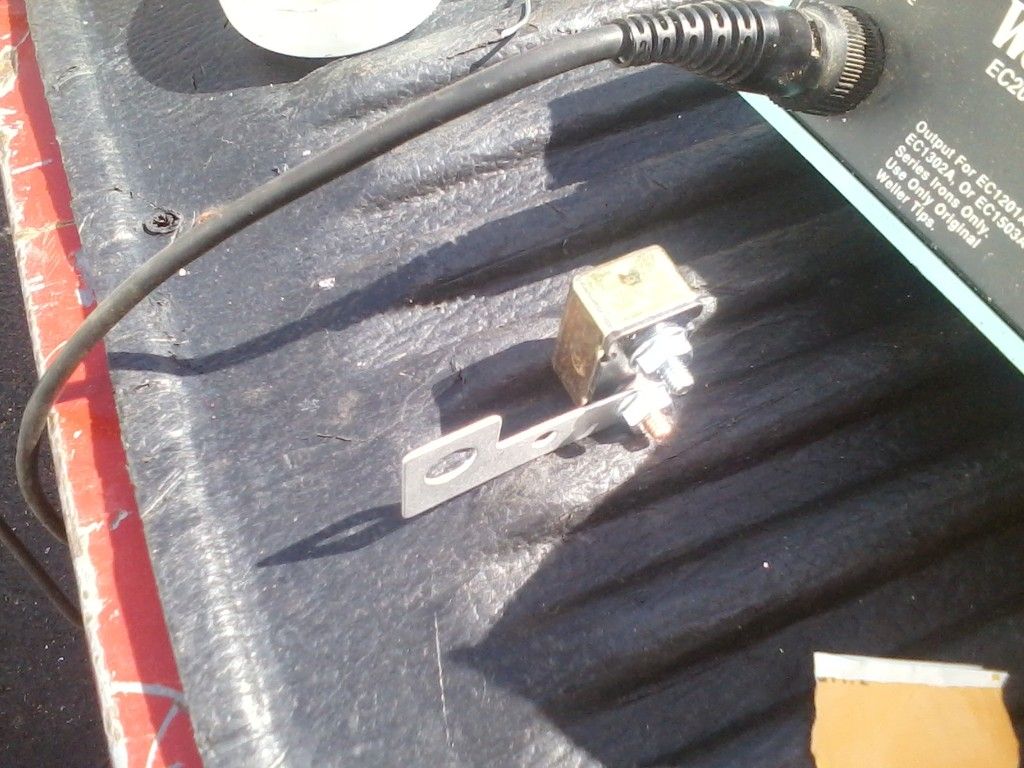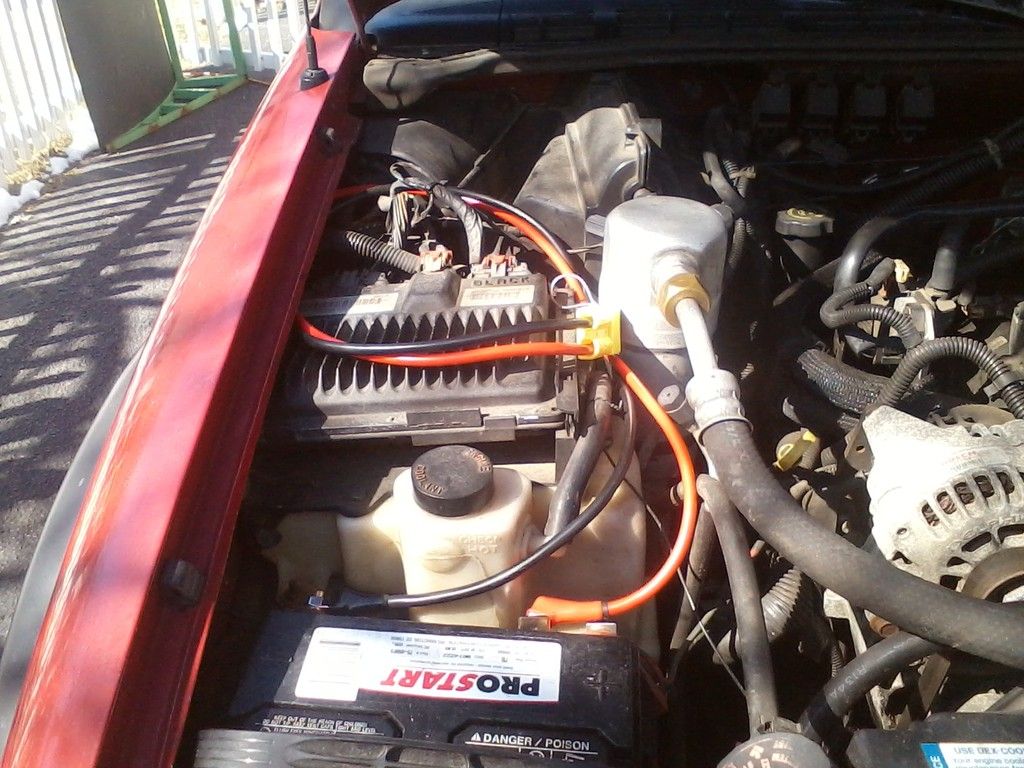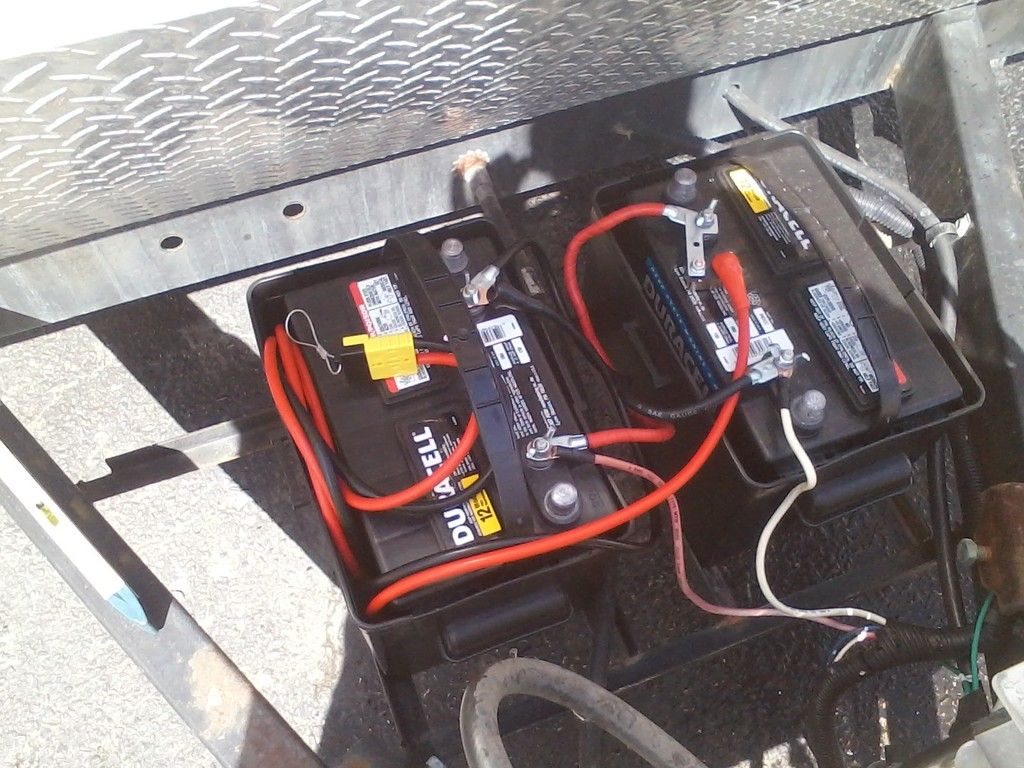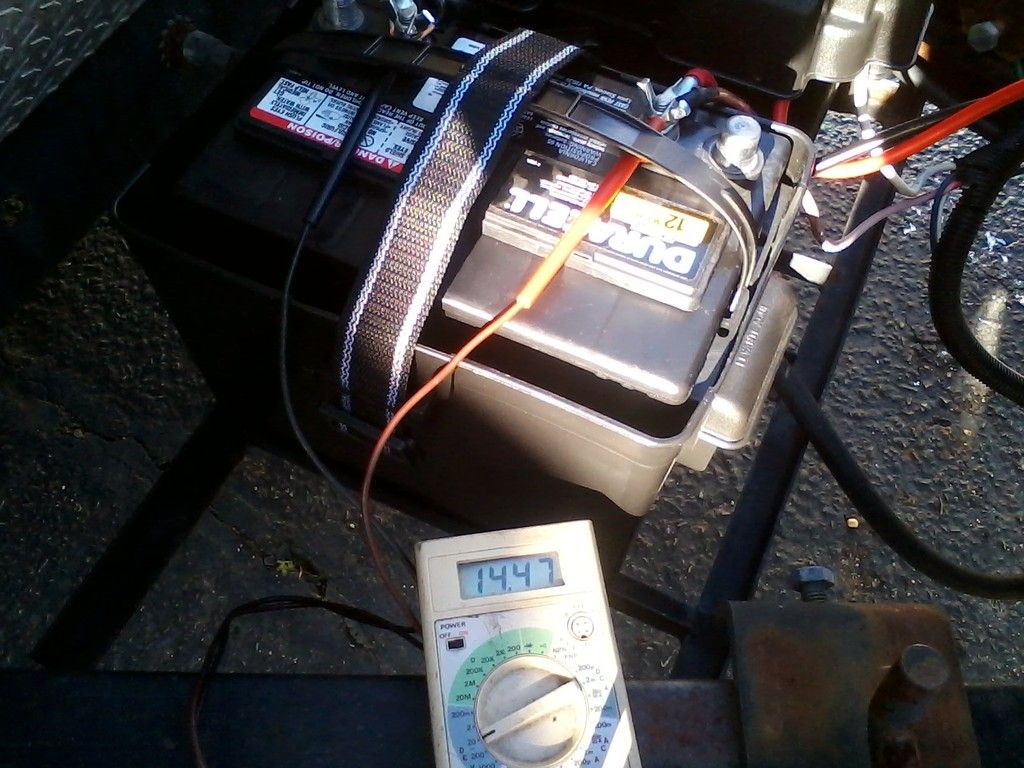lawrosa
Mar 22, 2015Explorer
Charging with TV alternator... Mod with pics...
Finally finished my charging cable mod from TV alt/battery direct to camper batterys for dry camping...
I did a small charge today and checked voltages only. My clamp on amp meter was not working... I will post back with amps and how long it takes to recharge from 12 volts to fully charged...
These are the anderson like connectors I got cheap on amazon. total about $40 bucks. I had to cut the ends and solder on a 3/8" ring to connect to battery. The other side was fine. I connected the other to a 50 amp resettable breaker..
These are 6 gauge.
Also note my truck has a 105 amp alt. I want to limit the amps out why I used 50 amp breakers. Truck runs alone at about 20 amps. So it should not do more then 70 when charging.
I may change the breakers to 40 or 30 amperes...

New battery studs/side mount with 3/8" extension. 50 amp breaker on pos side with bracket. Got these breakers from e trailer...

50 amp breaker with bracket.

Keep it rolled up in a void near firewall..

Camper side. 8ft rolls up nice and stores in left side box.. Note 50 amp breaker on this end too on pos side right batt.... Dont need no short or fires...

Connected to TV.....


This is the voltage I am getting at my home made meter. I tied into 12v wires that are in the wall for the tank/battery monitor. so its not right from the convertor.
Notice 14.32 volts. I gave a charge when batterys were down to 12.4.
So the truck puts out over 14 volts.

And this is at the batterys.. 14.47 volts from my alternator... Cant get any better then this.. IMO I should be able to recharge my batterys when boondocking in a few hours...

Any one what to share what I can do better or criticism let me know please...
Hope this helps others that may want to try this mod...
Again I will get amp readings soon...
I did a small charge today and checked voltages only. My clamp on amp meter was not working... I will post back with amps and how long it takes to recharge from 12 volts to fully charged...
These are the anderson like connectors I got cheap on amazon. total about $40 bucks. I had to cut the ends and solder on a 3/8" ring to connect to battery. The other side was fine. I connected the other to a 50 amp resettable breaker..
These are 6 gauge.
Also note my truck has a 105 amp alt. I want to limit the amps out why I used 50 amp breakers. Truck runs alone at about 20 amps. So it should not do more then 70 when charging.
I may change the breakers to 40 or 30 amperes...

New battery studs/side mount with 3/8" extension. 50 amp breaker on pos side with bracket. Got these breakers from e trailer...

50 amp breaker with bracket.

Keep it rolled up in a void near firewall..

Camper side. 8ft rolls up nice and stores in left side box.. Note 50 amp breaker on this end too on pos side right batt.... Dont need no short or fires...

Connected to TV.....


This is the voltage I am getting at my home made meter. I tied into 12v wires that are in the wall for the tank/battery monitor. so its not right from the convertor.
Notice 14.32 volts. I gave a charge when batterys were down to 12.4.
So the truck puts out over 14 volts.

And this is at the batterys.. 14.47 volts from my alternator... Cant get any better then this.. IMO I should be able to recharge my batterys when boondocking in a few hours...

Any one what to share what I can do better or criticism let me know please...
Hope this helps others that may want to try this mod...
Again I will get amp readings soon...


